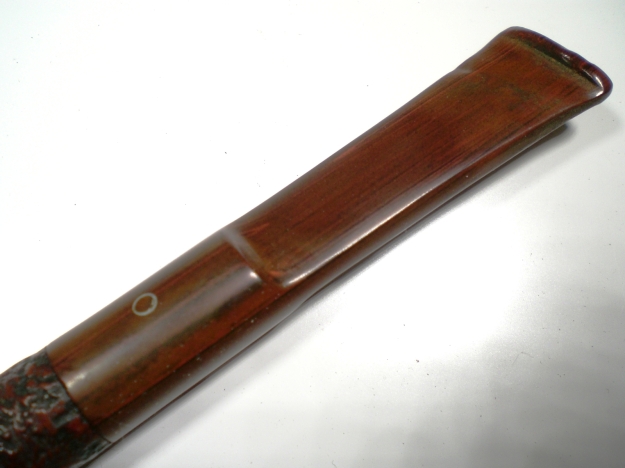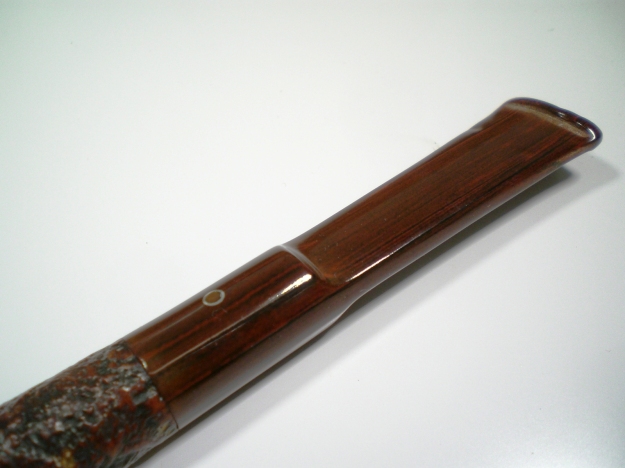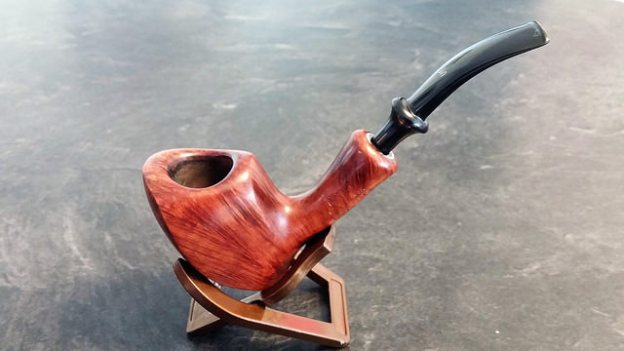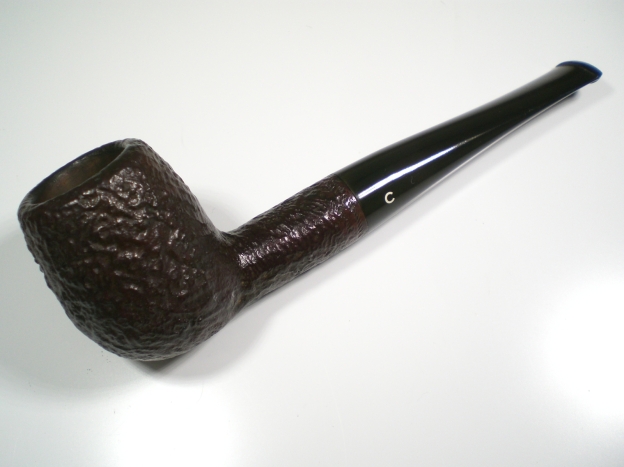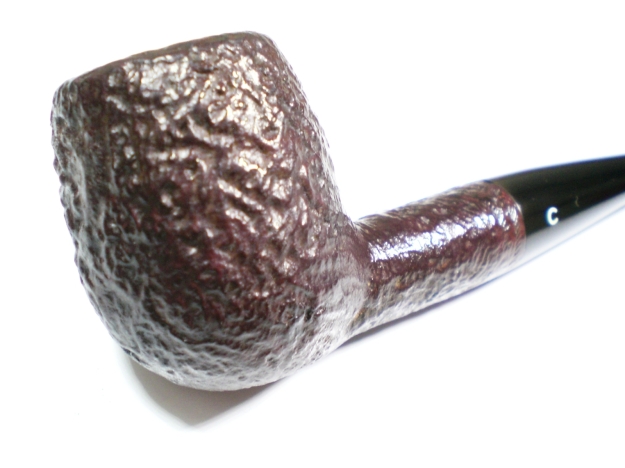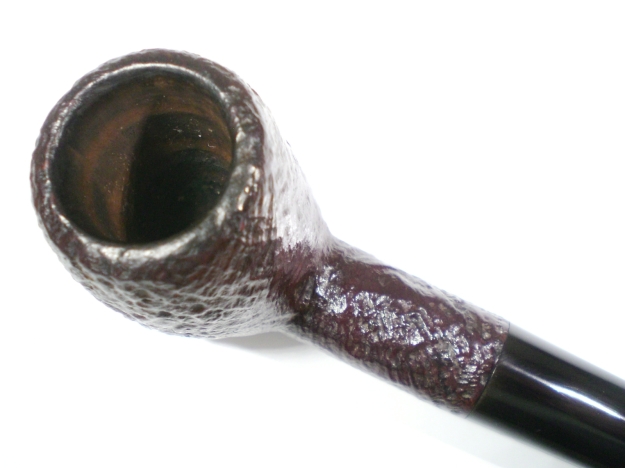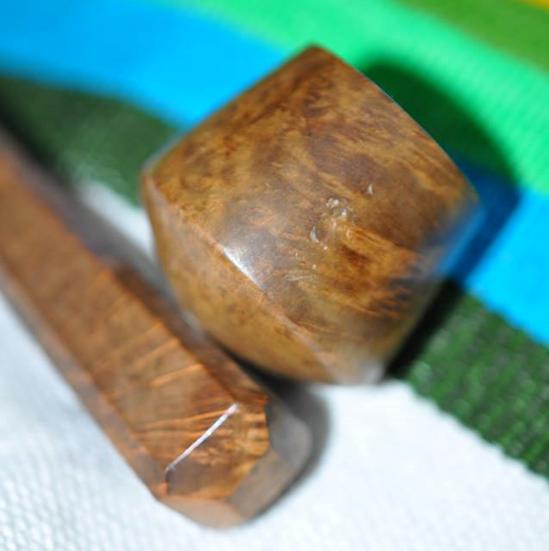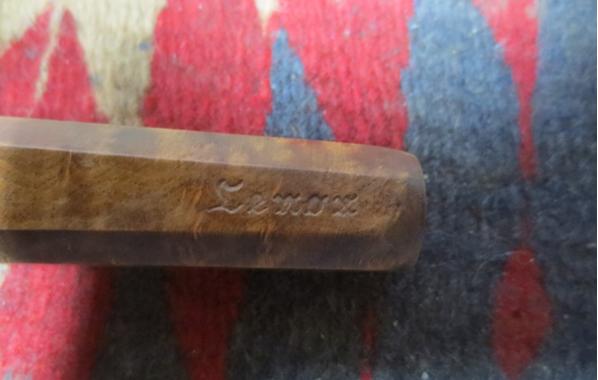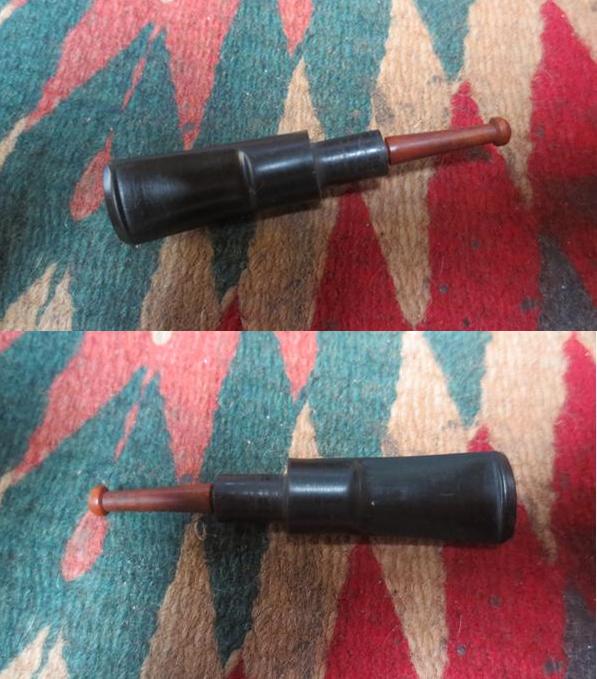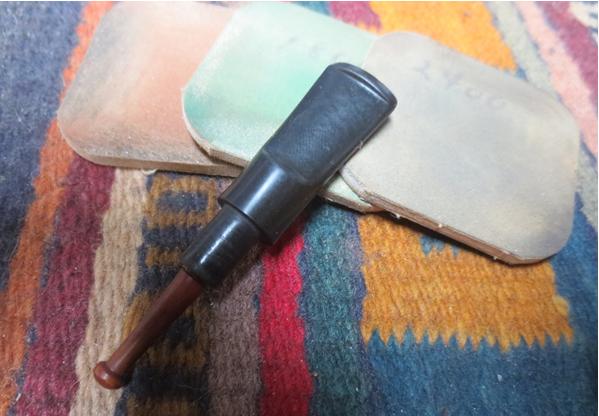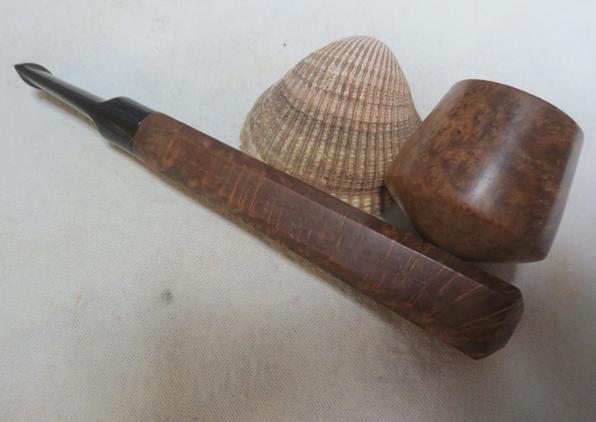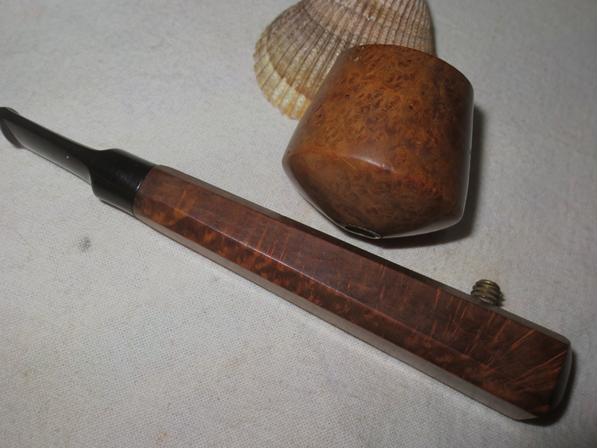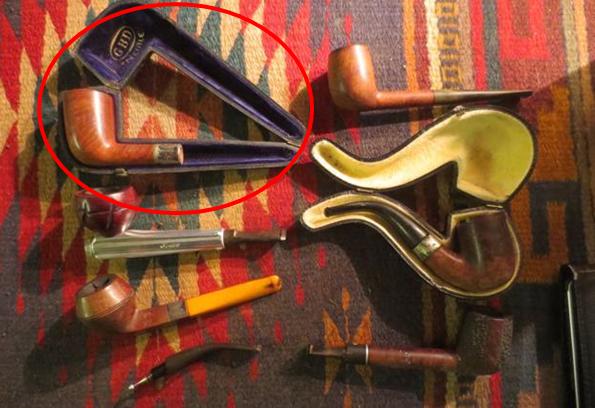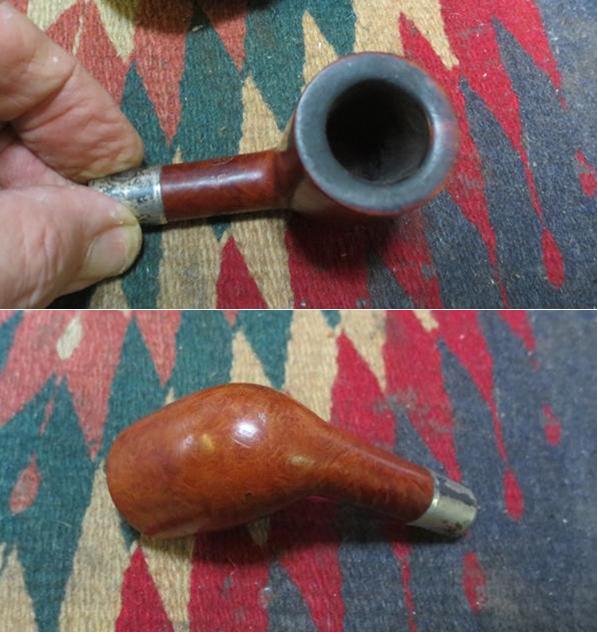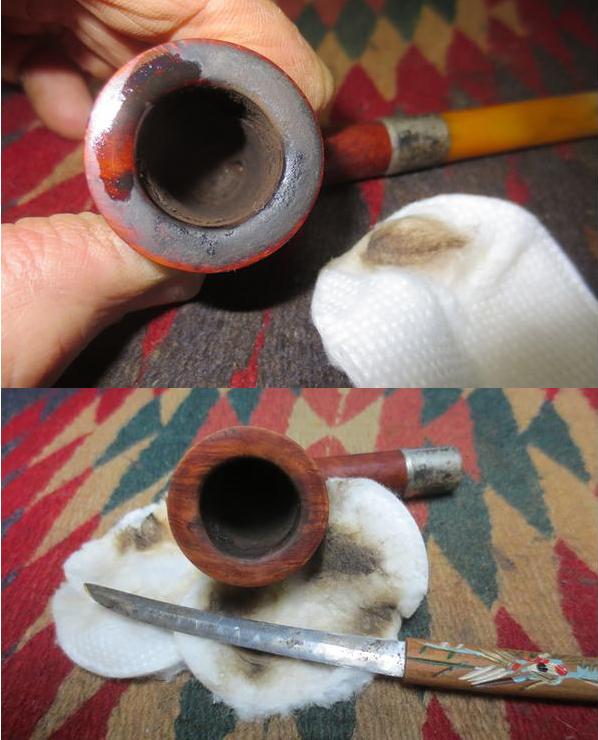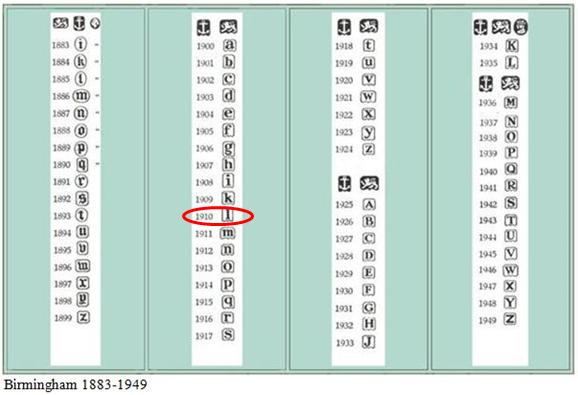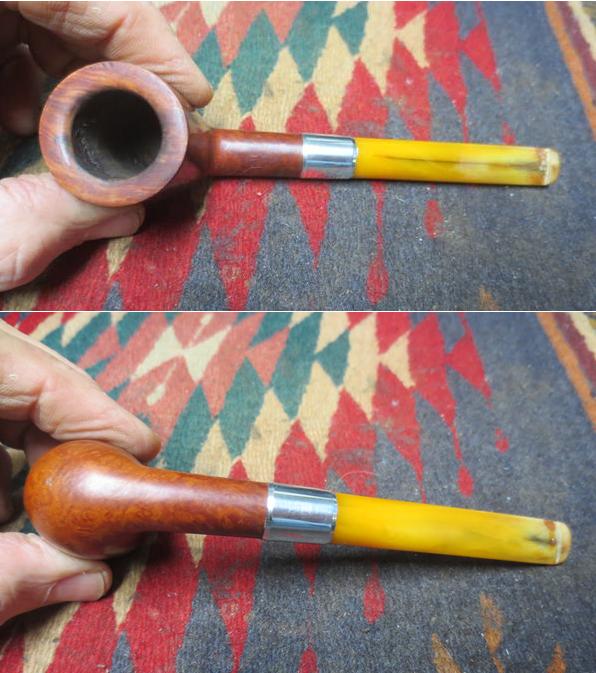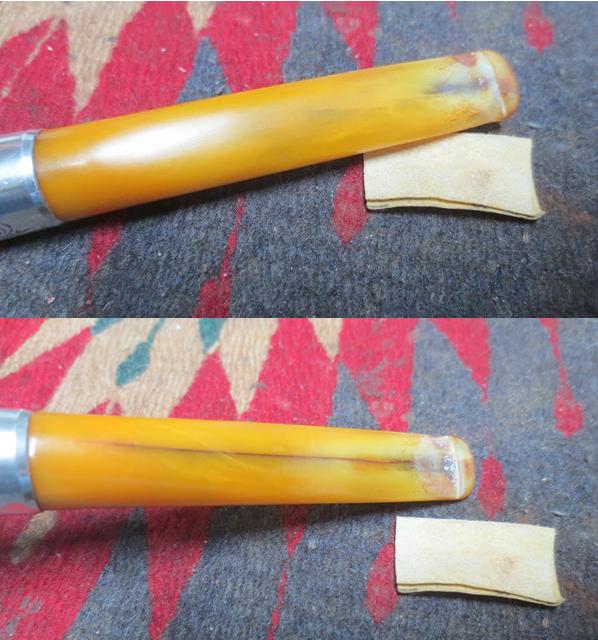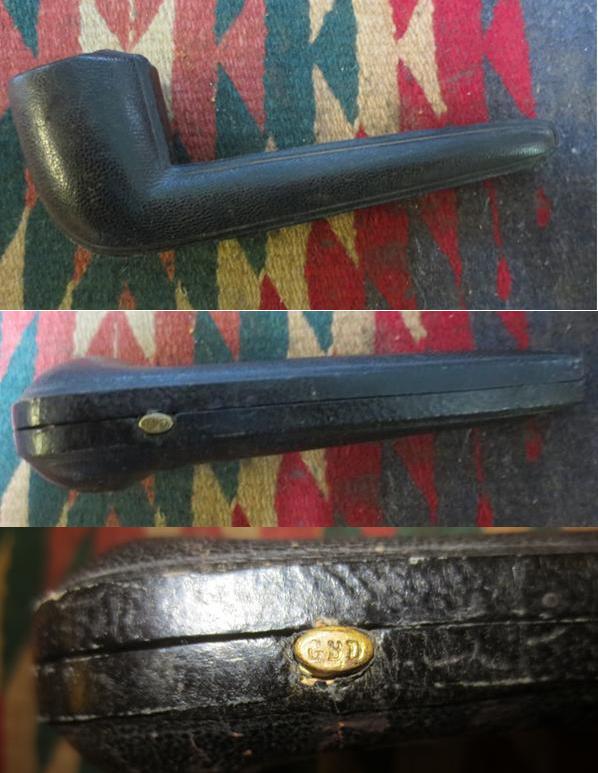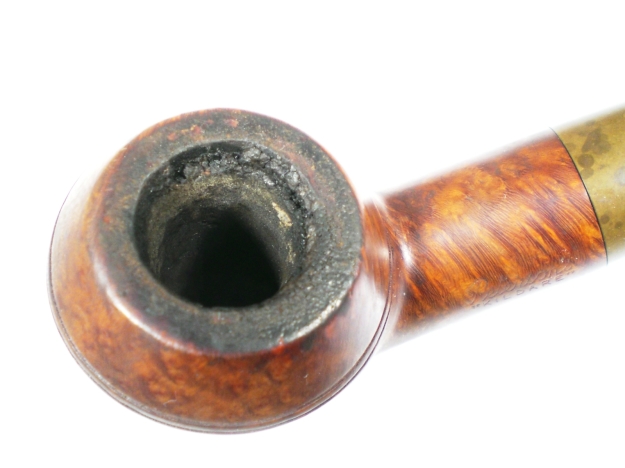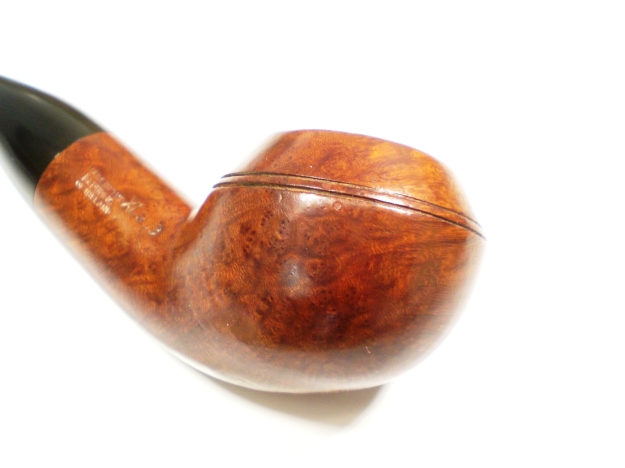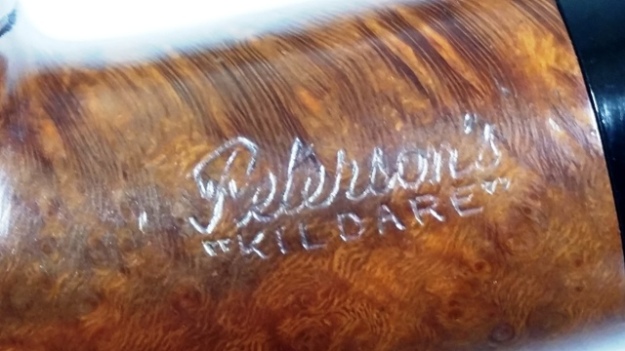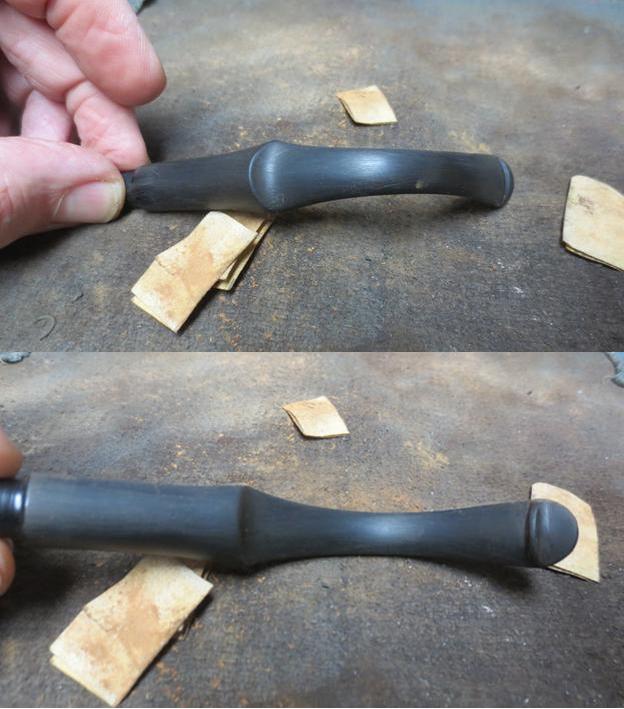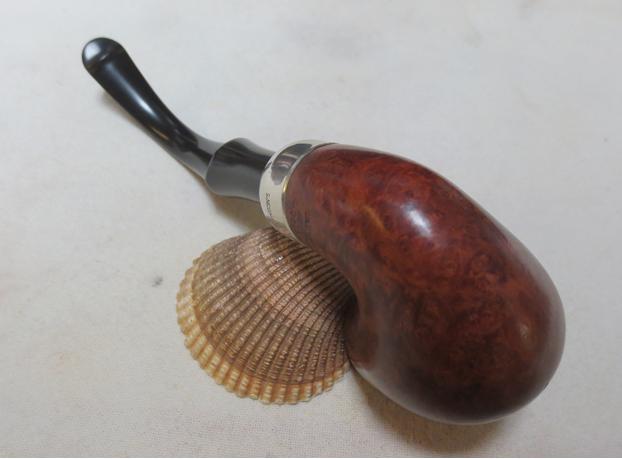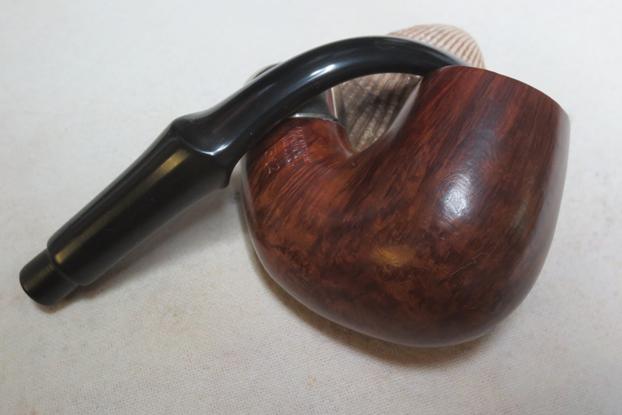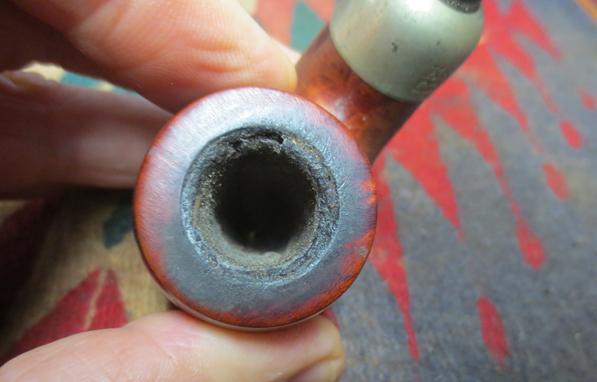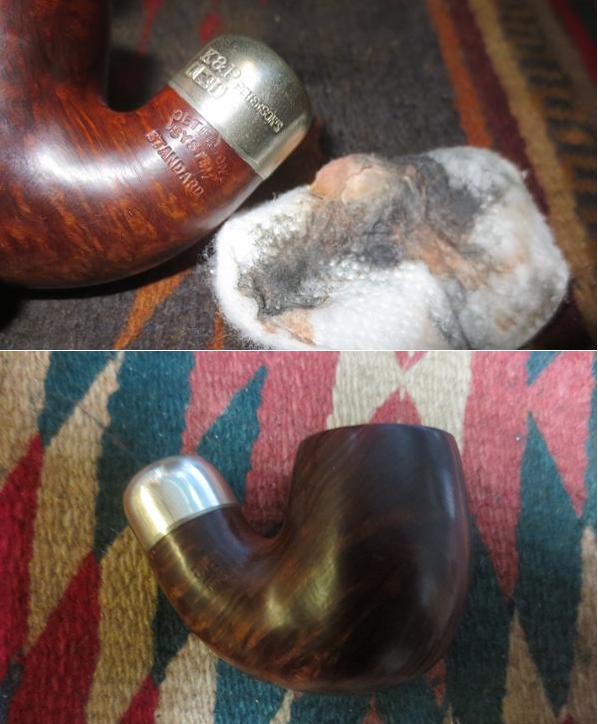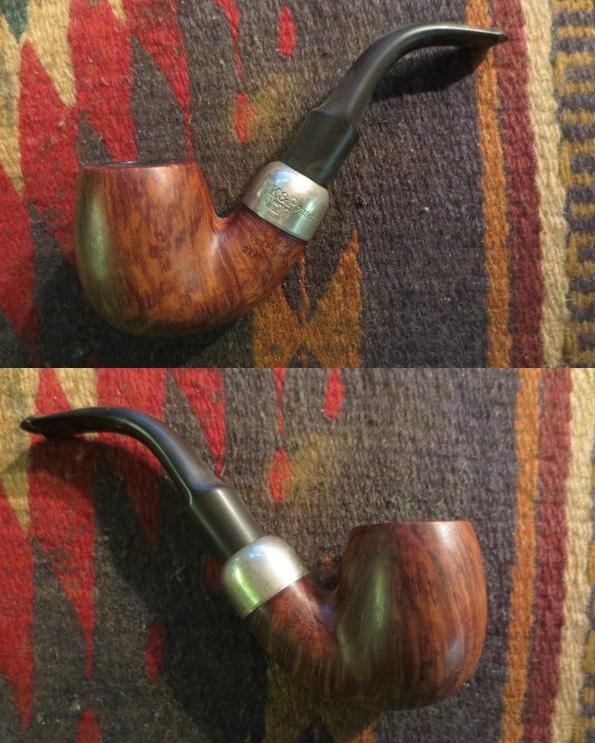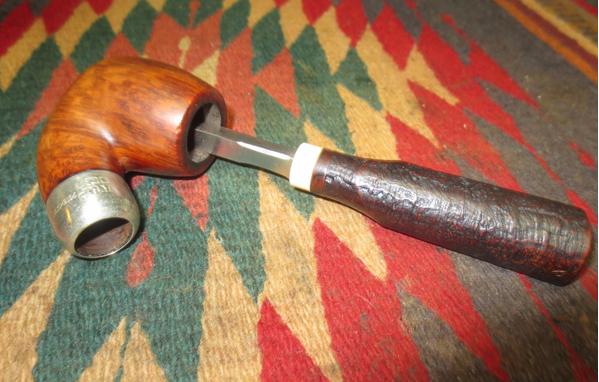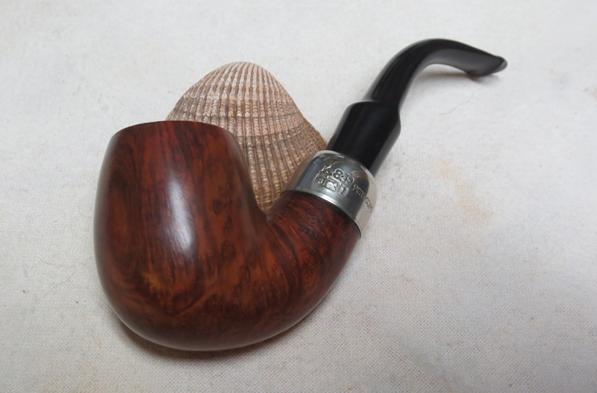Blog by Steve Laug
Saturday evening, I had a call from my brother Jeff. He had driven to Boise the night before to go to an estate sale and visit a few antique shops afterwards. Now you need to understand that my brother has been bitten by the bug. He loves looking for old pipes even more than I do and that is saying something. He is not able to drive by an antique shop without checking it out. Each holiday he takes always has time for a few pipe hunts as a part of the journey. But this time even for him this pipe hunt was extraordinary. The crazy part of the trip was a find in a thrift shop.
The first photo below shows the bounty of the trip in one photo. The later pictures show various views of the lot. Across the back of the three columns of pipes were two pipe racks and humidor jars that he found – the first on the left is a nine pipe rack and jar and the other a six pipe rack. Both are in excellent condition. A great ship model forms the backdrop to these amazing finds. What about the pipes? Why do I call it a really good day hunting? Well, have a look at the list of pipes that he came home with – and for me a few of these were quite a surprise. Using the photo above as a template for the pipes found, I will list the pipes starting with the left column from top to bottom and working my way across and down each column. I think you will agree about the calibre of the hunting day he had. The only thing that bugs me is that I was not present when he found these beauties. Here is the list:
What about the pipes? Why do I call it a really good day hunting? Well, have a look at the list of pipes that he came home with – and for me a few of these were quite a surprise. Using the photo above as a template for the pipes found, I will list the pipes starting with the left column from top to bottom and working my way across and down each column. I think you will agree about the calibre of the hunting day he had. The only thing that bugs me is that I was not present when he found these beauties. Here is the list:
Column 1:
- A new unsmoked WDC Wellington bent that is just gorgeous
- A 1985 Dunhill 5113 Bent Apple Shell
- A Sasieni Canadian London Made – a long rusticated pipe that is in excellent condition
- A shallow sandblast that is stamped Wellpipe.
Column 2:
- A beautiful Castello 54P Sea Rock Bulldog
- A Peterson’s Emerald 80S Bulldog
- A rusticated Italian pipe
- A rusticated Calabresi
- An older pipe with Black & Silver band, Yellow Curved Stem.
- In between the second and third column there is a small pipe with a gold band – just 3 inches long.
Column 3:
- An SMS Handcarved Block Meerschaum Church Warden
- A Perkins LTD Rhodesian looking a lot like a GBD 9438
- A KBB Yello-Bole Premier with a black propeller style logo on a yellow stem
- A red Calabresi apple
- A Savinelli Made Roma.
Not shown in the photos:
- A Bryson Metal Pipe
- An Ansell’s WASH. D.C.
- A Garden pipe Italian Made
- An L.L. Bean billiard
- A red Italian Made Rusticated pipe.
The next photo is basically the same as the one above just a bit closer look at the lot. The list is the same as the photo above. You can see the pipes a little more clearly. Each photo that follows gives you a closer and closer look at the pipes. The first photo below focuses on the first and second column in the above pictures. You can see the condition of the pipes in those columns. There are some classic finishes that are dead giveaways for the brand of the pipe in my opinion. The first one is obviously a Wellington no doubt about it the Dunhill is a classic Shell Briar and the third pipe has a typical Sasieni finish on it. In the second column you can see the classic Castello Shape of the bulldog and the Peterson’s directly below it.
The first photo below focuses on the first and second column in the above pictures. You can see the condition of the pipes in those columns. There are some classic finishes that are dead giveaways for the brand of the pipe in my opinion. The first one is obviously a Wellington no doubt about it the Dunhill is a classic Shell Briar and the third pipe has a typical Sasieni finish on it. In the second column you can see the classic Castello Shape of the bulldog and the Peterson’s directly below it.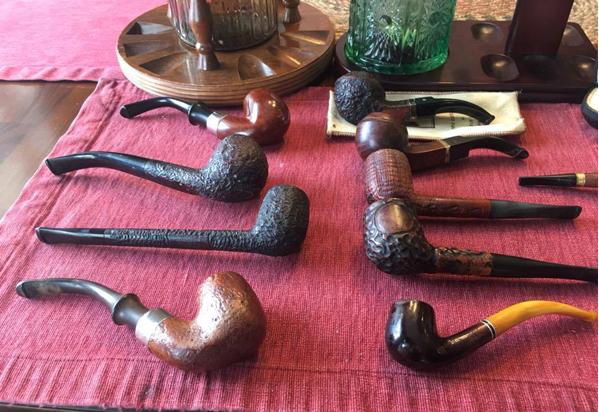
The next photo shows the second and third columns of pipes. The SMS Meerschaum at the top of the third column is a classic looking Churchwarden. The pipe just below that has the appearance of GBD 9438 but is stamped Perkins. I am pretty sure that GBD made the pipe for the pipe shop. The third one, a Yello-Bole is classic looking and has the propeller logo on the stem making it an old one. The others have the look of Italian Basket pipes. The next photos highlight some of the premium finds of the day. The first one shows the SMS cased block meerschaum church warden and the Perkins LTD Rhodesian – a GBD look alike.
The next photos highlight some of the premium finds of the day. The first one shows the SMS cased block meerschaum church warden and the Perkins LTD Rhodesian – a GBD look alike. The next shows photo shows the unsmoked WDC Wellington, the Dunhill 5113, the Sasieni Canadian London Made and the Wellpipe. The Castello and the Peterson Dogs are peeking out on the right side of the photo.
The next shows photo shows the unsmoked WDC Wellington, the Dunhill 5113, the Sasieni Canadian London Made and the Wellpipe. The Castello and the Peterson Dogs are peeking out on the right side of the photo. The next photo shows the beautiful Castello 54P Bulldog sitting on its pipe sock and the Peterson’s Emerald 80S Bulldog.
The next photo shows the beautiful Castello 54P Bulldog sitting on its pipe sock and the Peterson’s Emerald 80S Bulldog.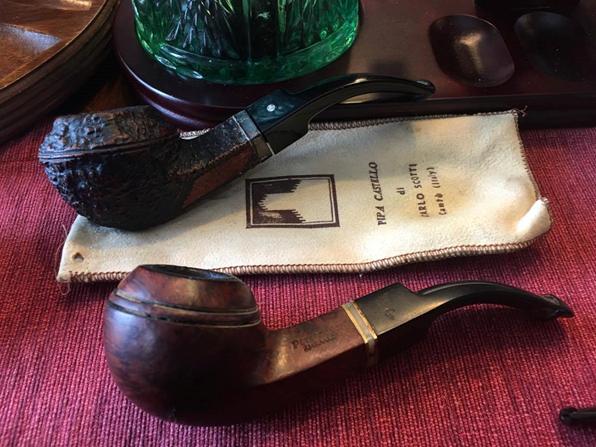 The final photo gives a classic view of the of the Castello bulldog with it “diamond” stem logo.
The final photo gives a classic view of the of the Castello bulldog with it “diamond” stem logo. Trips like this always leave me excited but wanting to go again and find some more pipes. They keep me looking for that illusive pipe that is sitting there, dusty and unnoticed on some thrift shop shelf or in a display case behind odds and ends or in a thrift shop with some unbelievably low sale price. Or even at some estate sale where the treasures of someone’s life are being sold off to curious seekers. Wherever they may show up I want to be there and find them and feel the thrill of the hunt and capture of the prize.
Trips like this always leave me excited but wanting to go again and find some more pipes. They keep me looking for that illusive pipe that is sitting there, dusty and unnoticed on some thrift shop shelf or in a display case behind odds and ends or in a thrift shop with some unbelievably low sale price. Or even at some estate sale where the treasures of someone’s life are being sold off to curious seekers. Wherever they may show up I want to be there and find them and feel the thrill of the hunt and capture of the prize.
In this case I was not present – only vicariously through my brother’s tale. I could see each pipe as he described finding it and then showed me the pipe. He parceled them out to keep me guessing what he had in hand. That was good, but to me one of the more amazing parts of the trip came about through a series of fortuitous events and being in the right place at the right time. In the last antique shop he stopped in on the way home in Pocatello, Idaho he asked the shop person if there were any pipes in the shop. The shop had a few and he bought the LL Bean, the Garden Italy, and an Italian billiard. A fellow who had a booth in the shop overheard the conversation and said that he had some pipes at home that might interest my brother. He went and got a box with some pipes in it and Jeff bought the Peterson Emerald 80S Bulldog from him. After that interchange a young guy said he could not help overhearing the conversation and said that he had seen some pipes at a St. Vincent de Paul thrift shop not far away. He gave my brother directions and Jeff went to check it out. At the thrift shop he found that great model sailing ship and four pipes – the Dunhill, the Sasieni, the Perkins LTD, and the Bryson.
Let me summarize his finds once again and tell you where he found them. From the estate sale he picked up the two pipe racks and 7 pipes at the estate sale – the SMS Meerschaum churchwarden, the Castello 54P, the Garden made in Italy, the Savinelli Roma, 2 Calabresi pipes from Italy and a reddish pipe marked Italy with a worm trail rustication.
From antique shops in Boise he picked up 5 pipes – an older KBB Yello-Bole Premier, a Wellpipe, a small pipe with gold band ~3 inches long, an older bent pipe with black & silver band and a yellow stem and an unsmoked WDC Wellington.
And from the stop in Pocatello he picked up 8 pipes – the LL Bean, the Garden Italian, a no name Italian billiard, a Peterson’s Emerald 80S bulldog, the Dunhill, the Sasieni, the Perkins LTD, and the Bryson.
Not a bad day hunting in my opinion – 20 pipes, two pipe racks and humidors in good condition and a model sailing ship. It is days like this one that keep me looking where ever I travel. Cheers and good hunting to all who read this.


